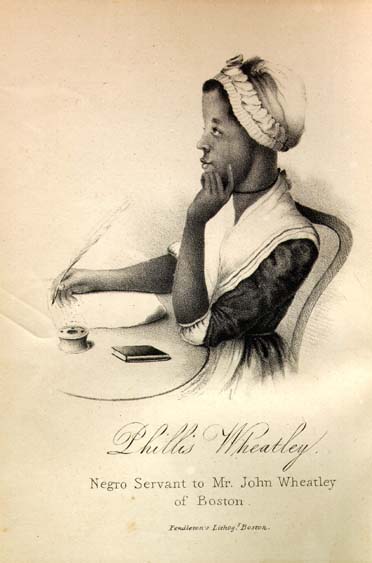Phillis Wheatley was the first African American published poet. Born in West Africa in 1753, she was captured and sold to slave traders at age seven or eight years old. She traveled aboard the slave ship, The Phillis, in wretched conditions. Reaching Boston in 1761, John Wheatley, a tailor, bought her as a servant for his wife, Susanna. They named her Phillis after the slave ship. And gave her their last name as was customary. Now she was Phillis Wheatley.

Courtesy of Wikimedia Commons
The Wheatleys soon recognized Phillis’s exceptional intelligence. Their children, Mary and Nathaniel, taught her to read and write. She first became fluent in English and then learned to read Greek and Latin. She studied geography, history, astronomy, and literature.

Courtesy of Wikimedia Commons
Inspired by English poets, especially Alexander Pope, Phillis began to write poetry. The Newport Mercury printed her first published poem in 1767 when she was thirteen or fourteen. The poem described the sea voyage of Mr. Hussey and Mr. Coffin that ran into a horrific storm. Phillis had heard them tell their story.
Her most famous poem, “On Being Brought from Africa to America” was published in 1768. This poem reveals her feelings on slavery and racial injustice. But it was her poem “On the Death of the Rev. Mr. George Whitfield” that brought her into the national spotlight in 1770.
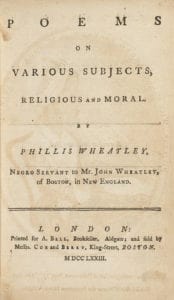
Courtesy of Wikimedia Commons
Phillis tried to have a book of her poetry printed in Boston. But the printers refused to believe that an African America had written the poems. She went to court to testify that she was the author. Eighteen men, including John Hancock, gave her an exam. Following the exam, the men agreed that she had written the poems. They signed a document that later appeared in her book.

Courtesy of flickr.com
Phillis and Nathaniel Wheatley sailed to England in 1773. With the financial help of a English countess, Phillis’s first and only book of poetry was published in England. Poems on Various Subjects Religious and Moral included “On Being Brought from Africa to America.”
Sometime after the publication of her book, Phillis became a free woman. She continued to write poetry and in 1778 married a free African America, John Peters. They struggled to meet expenses and after Peters was imprisoned for debts, Phillis worked as a scullery maid in a boarding house. She tried to publish a second book of poetry, but was unsuccessful.
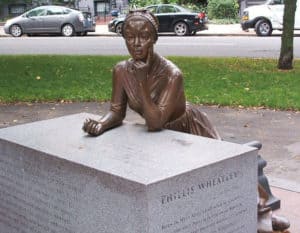
Courtesy of flickr.com
In 1784, Phillis wrote “Liberty and Peace,” her last poem. Sadly, on December 5, Phillis died in Boston at age 31. Many of her poems were lost. In 2003, Phillis was honored with a statue at the Boston Women’s Memorial.
Phillis Wheatley led the way for African America women to write and publish great literature.
Images Courtesy of Wiki Commons
If you like this post, then please consider sharing it and leaving a comment below. Thank you! Barbara Lowell, Children’s Author
You may like: The Remarkable Story of George Moses Horton Poet https://barbaralowell.com/george-moses-horton
Books For Kids:

A Voice of Her Own: The Story of Phillis Wheatley, Slave Poet
By Kathryn Lasky, Illustrated by Paul Lee
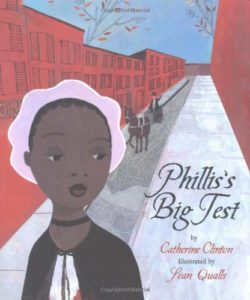
Phillis’s Big Test
By Catherine Clinton, Illustrated by Sean Qualls
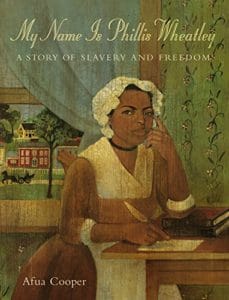
My Name Is Phillis Wheatley
By Afua Cooper
